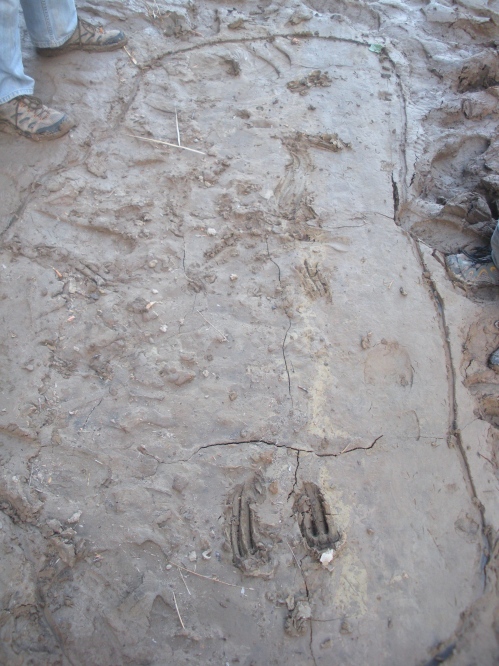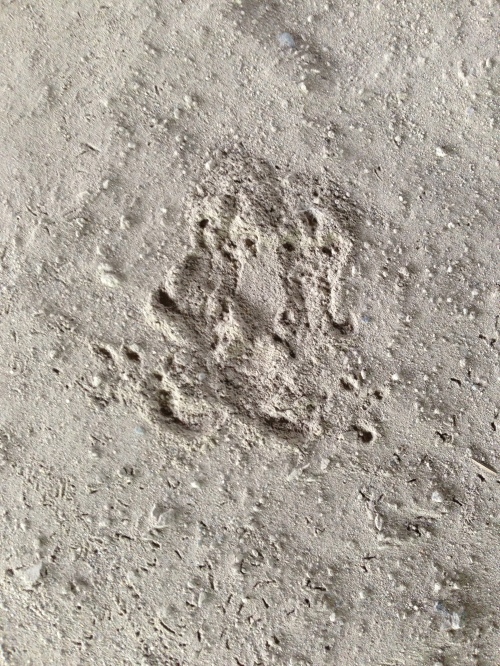I’ve had a couple people tell me lately that they want to focus on tracking but they don’t know where to start. Here are some of my suggestions.
Tracking is not an easy skill to acquire, mainly because there aren’t very many people that know about it. I have spent thousands of dollars, thousands of hours, many years and moved all over the country trying to learn tracking. I’ve made a real effort to find the best trackers in the country and spend time with them. I know this is not practical for most people but it is by far the fastest way to learn tracking – find someone who is a tracker, follow them around and pick their brain. This is what’s so great about the tracking evaluations (http://trackercertification.com/). When you take an eval, you get to spend two days with one of the best trackers in the world and be quizzed on everything they see. There are tracking classes and clubs all over the country – google them and seek them out.

Here is one from an eval – the scene where a bobcat killed a ringtail. One of my all time favorite eval questions.
Here are some tips for folks that want to learn tracking:
1. Find good local tracking spots and go there every day. Under bridges, river banks, muddy atv roads, and sand pits are some of the best places. When I lived in San Diego I had a loop I could walk from my house with great track traps. Every morning I would grab my coffee, walk the loop and check the tracks. I learned a lot by spending half an hour every day looking at tracks. I think the regularity is very important to building an intuitive recognition of the patterns.
When you go tracking, always make an effort to look for things that you don’t know. As you grow in your skills it is easy to look for what you know – it is fun and comfortable. But you learn by pushing yourself to look for what you don’t know, then sticking with it until you figure it out. There are always more questions you can ask. If you figure out what animal made the track, next ask which foot it is, how old the track is, how was the animal moving, how the animal fits ecologically into this region, etc.
2. Get the field guides. We have amazing field guides today that didn’t exist ten years ago. This is helping people fly forward in their tracking/naturalist skills. Here are the must-haves (even if you don’t live in the PNW or California):
Mammal Tracks and Sign (Elbroch), Bird Tracks and Sign (Elbroch), Wildlife of the Pacific Northwest (Moskowitz), Field Guide to Animal Tracks and Scat of California (Elbroch, Evans and Kresky), Animal Skulls (Elbroch), Bird Feathers (McFarland and Scott), Practical Tracking (Leibenburg, Elbroch), Tracks and Sign of Insects and other Invertebrates (Eisman and Charney).
3. Strive to be a naturalist, not a tracker. In order to be a great tracker, you have to be a great naturalist. The point is to learn about nature, not tracks. Tracks are just an incredible resource for a naturalist to find animals and to see what they have been up to. Make a list of all the mammals, reptiles, amphibians, and birds of your region. This will require getting more field guides. Learn all the bird songs, the plants, trees, learn what everything eats (and what eats everything). I did the Kamana Naturalist Training Program. It was an incredible amount of work but gave me the confidence and tools to look things up and learn on my own. I highly recommend it.
4. Take as many evaluations as you can. http://trackercertification.com/calendar/ These are the best tracking workshops you will find. You will leave inspired and focused on where you can improve in your tracking abilities. What may take you years to figure out on your own you will learn in two days.
5. Take a lot of pictures. When you take pictures of tracks or sign, point the camera straight at it so the angle doesn’t obscure things. And put a ruler down for scale. It is great to cycle through your pictures later and re-learn what you saw that day. If you are stumped on some tracks or sign, take a picture and post it in one of the facebook tracking groups or send it to me – I’ll try to help.
It is a lot of work to be a naturalist and a tracker but there are few things in life that I have found to be more rewarding. The initial hump may seem insurmountable but with learning any new skill, you just have to tough it out. Go tracking regularly, make an effort to look things up and before you know it, you’ll gain some confidence and enter a new world full of incredible drama and magic. Suddenly the mysteries will begin to feel solve-able and less overwhelming. And you’ll begin to cherish the mysteries that you can’t figure out because those are the most fun anyway.

Sorry about the blur but here are tracks I found yesterday. What may seem like a crazy jumble of dots is actually a breeding pair of frogs. The female is dragging the male frog which is latched on to her back (this is called amplexus). I never would have learned to recognize this without my co-worker Fil who is writing a book on tracks and sign of reptiles and amphibians. Now that I know it I see it all over the place. It looks like regular frog tracks with an extra pair of legs dragging behind. Also in this picture are tracks of a spider, a beetle and a millipede.